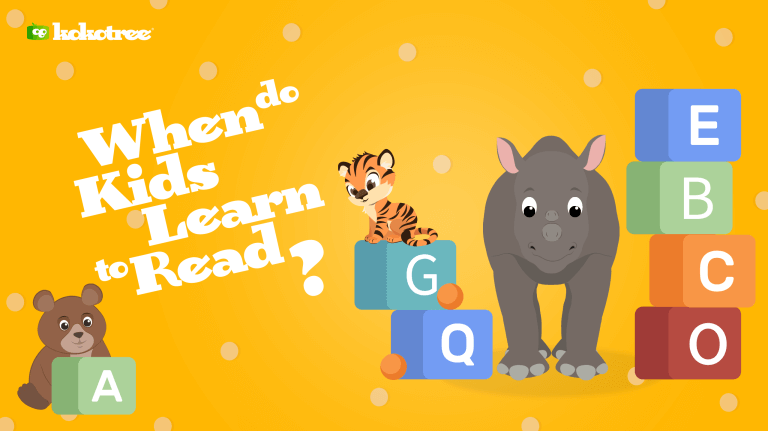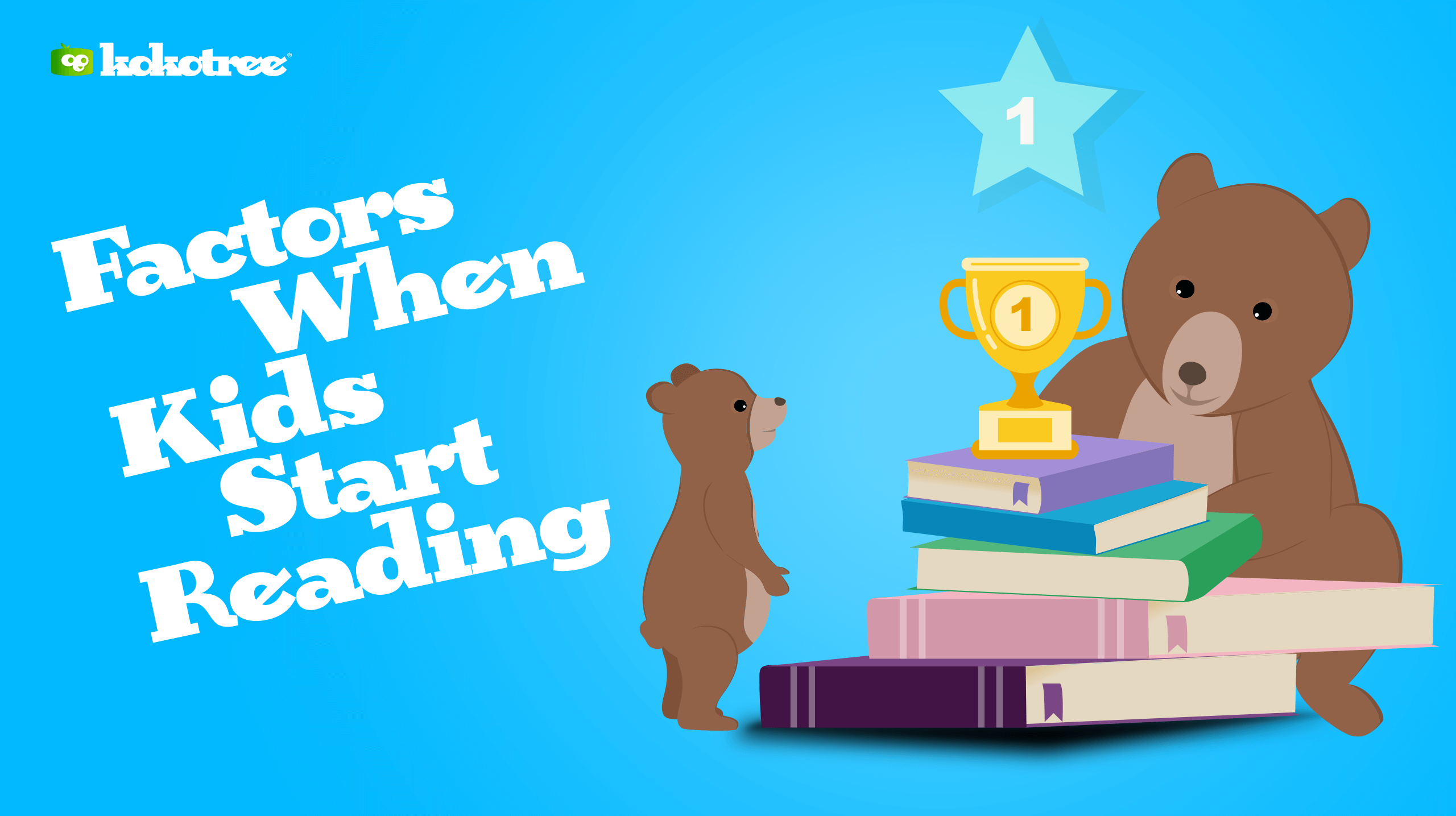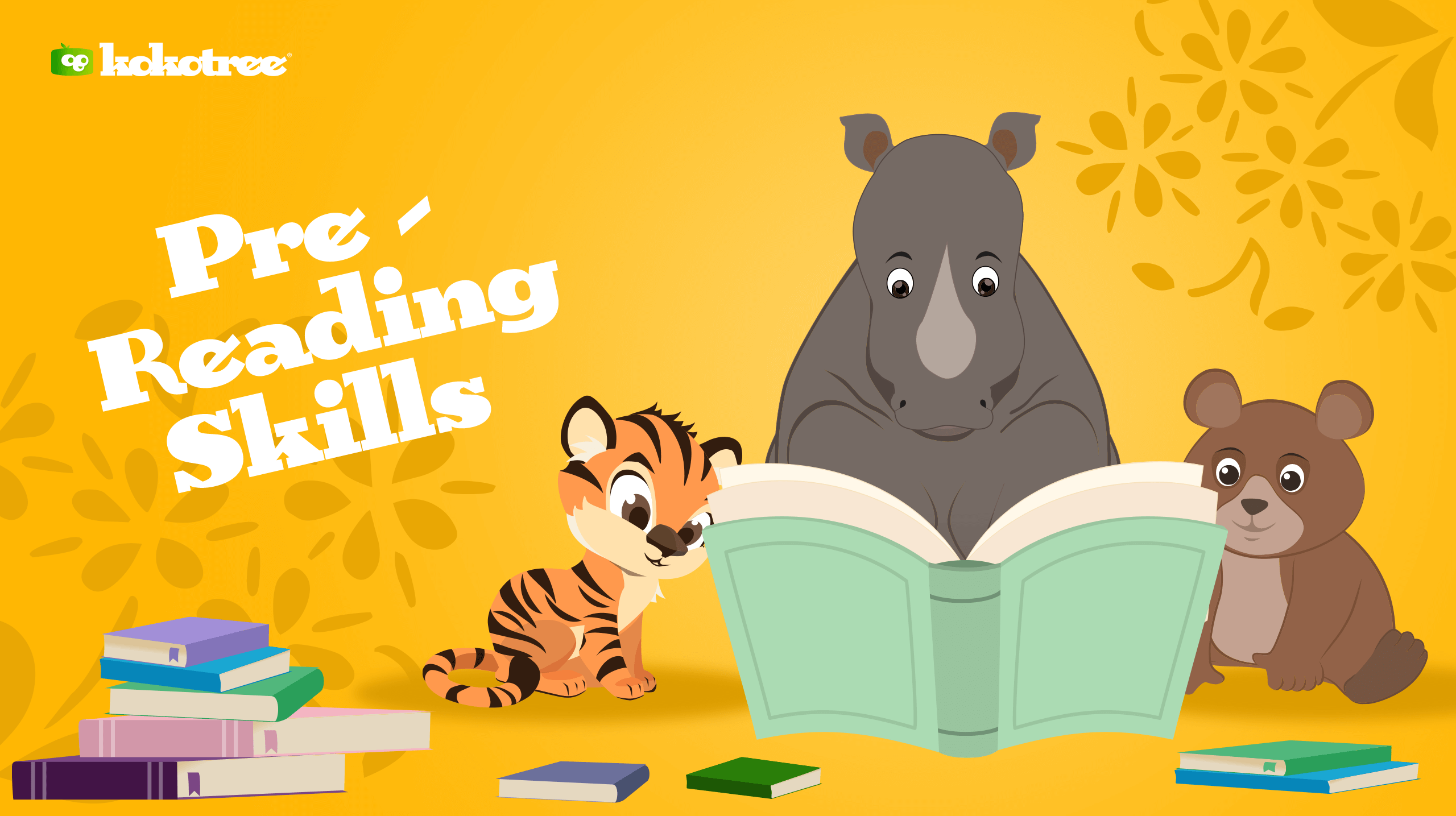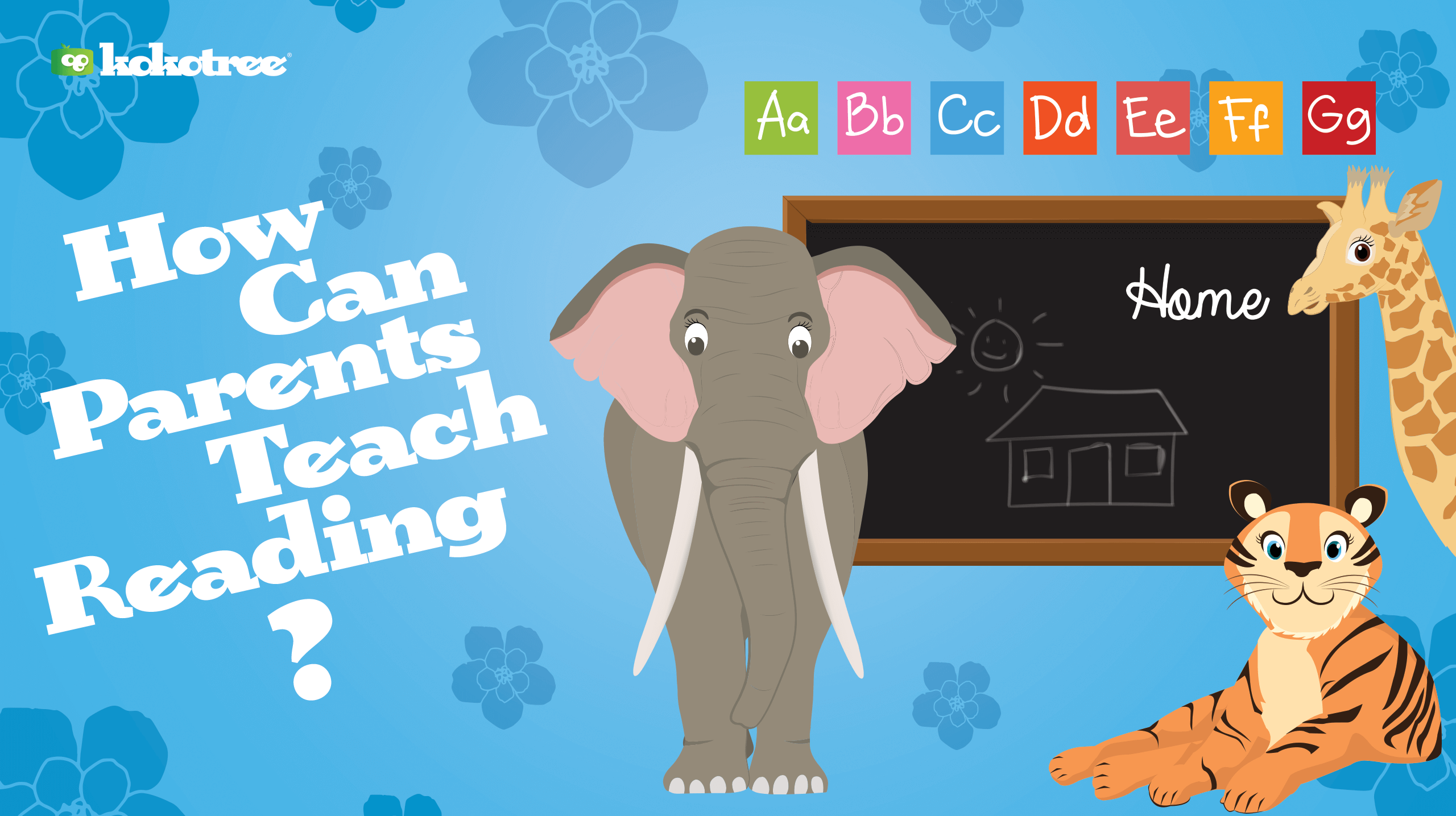

When do kids start to read? Typically kids learn to read between the ages of 4 and 7. A child usually becomes fluent at ages 7 to 8, reading words quickly, accurately, and automatically.
There is no single “right” time for kids to learn to read. Some kids may develop reading skills early, while others may take longer.

Various factors can influence when a child starts to read, including cognitive development, school readiness, parental involvement, and teacher instruction.
Cognitive development is one of the essential factors in determining when a child learns to read. Generally, kids develop the ability to understand spoken language between 2 and 4 years old.
Around this time, also known as preschool age, they also begin to develop the ability to learn new words and use them in sentences. As kids age, their cognitive development continues progressing, allowing them to process more significant amounts of information and begin learning new reading skills.
In addition to cognitive development, a child’s level of school readiness is also essential when learning to read. School readiness refers to the skills and abilities that kids need to be ready for formal schooling.
These may include knowing how to sit still and focus on tasks, working well with others, following directions, and expressing themselves verbally.
Research has shown that kids who are more school-ready tend to develop reading skills earlier than those who are less prepared.
Parents also play an essential role in their child’s reading development. Studies have shown that kids whose parents regularly read and discuss books with them are more likely to master early literacy skills, such as letter and sound recognition.
In addition to reading with their children regularly, parents can also help foster early literacy skills by talking with kids about the things they see in everyday life and helping them expand their vocabulary.
Finally, teachers are essential in determining when kids learn to read.
Research has shown that teachers play a critical role in helping kids develop foundational reading skills they need to succeed, such as phonemic awareness, letter knowledge, and vocabulary.
Teachers can accomplish this by providing targeted instruction on these early literacy concepts, encouraging students to practice their new skills at home, and giving effective feedback on how well students progress.
Several factors can influence when kids learn to read, including cognitive development, school readiness, parental involvement, and teacher instruction. By being aware of these factors and providing your child with the support, they need at home, and in school, you can help ensure that they develop strong reading skills at an early age.

As a parent, you want to ensure that your child is on track with their development. Below are some reading milestones to look for as your child progresses through childhood. Happy reading!
There’s a lot that happens during infancy. Most infants learn that gestures and sounds communicate meaning and will respond when spoken to. They’ll also direct their attention to a person or object.
By the end of infancy, many kids will understand 50 words or more. Infants also start to reach for books and turn the pages with help, and they may even respond to stories and pictures by vocalizing and patting the pictures.
These milestones are essential to development, and it’s incredible to watch babies grow and learn.

Get free parenting tips, news, updates, and content from Kokotree.
Most toddlers are curious and full of energy. They want to know everything and are constantly exploring their surroundings.
At this age, kids usually begin to answer questions about objects in books and pretend to read them. They may also scribble on paper and turn pages of board books.
Some toddlers even have a favorite book they request to read often. As they grow and develop, toddlers will continue to learn new things at an amazing pace.
So don’t be surprised if your toddler suddenly knows the names of all the objects in a book or can finish sentences from a familiar story. Just sit back and enjoy watching your little one explore and learn about the world around them.
Most kids start preschool around age 3. At this age, they usually begin to explore books independently, listen to longer books that are read aloud, and retell a familiar story.
They might also sing the alphabet song with prompting and cues, make symbols that resemble writing, and recognize the first letter in their name.
Additionally, they learn that writing differs from drawing a picture and imitating the action of reading a book aloud. All of these skills are important for preparing for kindergarten and beyond.
Most kids start preschool around age 3, but some begin later. If your child is four and just starting preschool, don’t worry – they’ll still be able to pick up all the skills they need.
Late preschoolers usually have no trouble recognizing familiar signs and labels, especially on signs and containers. They might also be able to recognize words that rhyme and name some of the letters of the alphabet.
And if they can’t write their names yet, they should at least be able to recognize the letters in their names. By this age, kids should also be aware of the beginning letters or sounds of words, and they may even be able to match some letters to their sounds.
Late preschoolers are often aware of syllables and understand that print is read from left to right, top to bottom.
Many 4-year-olds can retell stories that have been read to them – though they may not remember all the details. So if your child is starting preschool a bit later than usual, don’t worry – they’ll still be able to keep up with their peers.
Kindergarten is an essential milestone in a child’s life, and it’s when they start learning the skills that will help them succeed in school and life.
Most kids begin kindergarten around age five. This year, they will learn to produce words that rhyme, match spoken and written words, and write letters, numbers, and words.
They will also learn to recognize familiar words in print, predict what will happen next in a story, and identify initial, final, and medial sounds in short words.
Kindergarteners will learn to identify and manipulate more minor sounds in speech, understand concrete definitions of some words, and read simple words in isolation and context.
By the end of the year, most kids can also retell the main idea of a story, identify details, and arrange events in sequence. All of these skills are important for success in school and beyond.
By first or second grade, most kids can easily read familiar stories and use pictures and context clues to figure out unfamiliar words. They may also use some common punctuation marks and capitalization in their writing.
When reading aloud, they will likely self-correct if they make a mistake. And after hearing a story, they may be able to show comprehension through drawings or other creative methods. When writing, they will begin to organize details into a logical sequence with a beginning, middle, and end.

How do you know when it’s time for your child to learn these skills? This article will discuss the different pre-reading skills kids should develop to be successful readers and strategies for helping children learn these skills.
Pre-reading skills include sensory awareness, phonological awareness, alphabet knowledge, print awareness, motivation to read and be read to, and listening skills and comprehension.
As children grow, they begin to learn about the world around them through their senses.
The first pre-reading skill that kids learn is called sensory awareness and refers to their ability to understand how the different senses – sight, hearing, touch, taste, and smell – work together.
Children start using these senses early in life to learn about their world.
For example, they may look at pictures or objects to understand what they are seeing, listen to parents or other caregivers reading stories, feel different things in their hands and try to determine what they are, and taste and smell various foods as they explore the world around them.
While all these skills are essential for helping children learn to read, several other pre-reading skills are critical for kids’ success with reading.
Phonological awareness refers to a child’s ability to recognize and manipulate the individual sounds (or phonemes) that makeup words. As they learn about these skills, children will understand that words are made up of smaller units of sound, such as syllables or even individual sounds.
One key aspect of phonological awareness is phonemic awareness, which refers to a child’s ability to identify and manipulate individual sounds within words. For example, a child may be asked to clap out the first sound in “pig” or say a list of words that start with the same sound as “cat.”
Other vital skills within phonological awareness include the ability to segment syllables in words and identify rhyming words. These skills help children understand how individual sounds relate, essential for learning how to read.
Another critical skill for learning to read is knowing the alphabet and letters.
Kids need to learn the names and shapes of letters and how letters are used to form words. For example, children should know that “cat” starts with the letter c, is made up of three sounds (or phonemes), and is written with the letter c.
As children develop these skills, they will begin associating letters with sounds, allowing them to decode new words as they read. This knowledge also helps kids understand how words are organized into sentences and paragraphs and ultimately helps them become successful readers.
Along with knowing how letters are used to form words, children also need to develop a basic understanding of print.
This refers to their ability to recognize that printed text is read from left to right and top to bottom on the page and their awareness that the words in sentences are organized into different parts and lines. For example, a child developing print awareness will notice that sentences always start with capital letters and end with periods and that words are divided into smaller parts (such as syllables) by spaces between them.
As children develop these skills, they begin to understand how books work, which helps them learn how to read.
Another necessary pre-reading skill for kids’ success with learning to read is a solid motivation to read and be read to.
This may include an interest in reading stories with parents or other caregivers, asking questions about what they are reading, and even pretending to read books on their own.
These behaviors indicate that children are excited about reading, which is essential for helping them develop strong reading skills and become lifelong readers.
Along with the above skills, children also need strong listening and comprehension abilities to become successful readers. This includes being able to understand what they are hearing as well as recalling and understanding new information that they hear.
For example, a child developing strong listening skills will listen attentively when a parent or caregiver reads a story to them and ask questions or comment in response. This indicates that they actively engage with the text and can understand what it says and how it relates to their experiences and knowledge.
Likewise, children who have strong comprehension skills will be able to follow along when someone reads aloud and will be able to recall and understand new information that they hear. This helps them build a strong foundation for learning how to read and becoming successful readers themselves.

There are five primary methods for teaching kids how to read: phonics, whole language, sight words, phonemic awareness, and vocabulary. While these are the most common, we’ll cover a few more to ensure we’re providing as much helpful information as possible.
Phonics is a method of teaching kids how to read by helping them to understand the relationship between letters and the sounds they make. This method typically involves teaching kids to read by sounding out words.
For example, the word “cat” would be sounded out as “c-a-t.” Phonics can be a helpful tool for teaching kids how to read, as it helps them to understand the connection between letters and sounds.
Phonics can help kids learn to read more fluently, as they can sound out words independently. However, phonics is not the only method of teaching reading; it is essential to use various forms to provide kids with a well-rounded education.
The whole language approach to reading instruction has been gaining popularity recently. This teaching method employs several techniques designed to immerse kids in language and help them develop a love of reading.
For example, rather than having kids read dry, boring texts, whole language teachers typically select interesting and engaging materials.
Whole language instruction often includes activities such as journal writing and discussions about books. These activities help kids become better readers and foster a love of literature.
Ultimately, the goal of the whole language is to create lifelong readers who enjoy the process of reading.
One method of teaching kids how to read is by using sight words. Sight words can be recognized immediately by looking at them without having to sound them out.
This method typically involves teaching kids a list of sight words they can use to read simple texts.
For example, some common sight words include “the,” “of,” and “to.” The benefit of this method is that it can help kids learn to read quickly and efficiently.
However, some drawbacks include that it can be difficult for kids to remember all the sight words, and if they don’t understand the meaning of the words, they can have difficulty reading comprehension.
Overall, sight words can be a helpful tool for teaching kids how to read, but it’s essential to consider the pros and cons before using this method.
Context clues are hints that an author gives readers to help them understand the meaning of unknown words.
This method of teaching kids how to read typically involves having kids look for context clues in the text to figure out the meaning of unknown words.
For example, if a kid comes across the word “lumberjack” in a book, they might look for context clues in the text to figure out that it means “a person who cuts down trees for a living.”
Word families are groups of words that share similar spelling patterns.
This method of teaching kids how to read typically involves teaching them groups of words that share a common spelling pattern, such as “at” or “am.”
Once kids learn a few word families, they can use this knowledge to sound out and read unfamiliar words.
For example, if a kid knows the word family “at,” they can figure out that words like “cat” and “bat” follow the same pattern.
A multisensory approach to teaching kids how to read engages multiple senses in the learning process.
This often involves using different methods or materials, such as videos, games, and hands-on activities.
By incorporating different learning styles and engaging multiple senses, this approach can help kids better understand how to read and become more successful readers.
The Neurological Impress Technique is a method of teaching reading that involves the teacher and the student reading aloud from the same book. The teacher reads slightly faster than the student to keep the reading fluent. The teacher usually sits next to the student and focuses their voice near the ear of the student.
This method is based on the principle that we learn best when actively engaged in the learning process. When we read aloud, our brains actively process the information and connect the new material and what we already know.
This active engagement helps us remember and understand what we have read. Reading aloud with a partner can help to improve fluency and pronunciation.
Students can pick up on proper pacing and intonation by reading along with a fluent reader. This technique can be used with any text, including fiction, non-fiction, and even poetry. It is an effective way to help struggling readers catch up to their peers.
The language experience approach to teaching reading is about integrating speaking and listening, reading and writing through developing a written text based on first-hand experiences.
In other words, it’s a way of using your life experiences to help you learn to read. By drawing on your own experiences, you’ll be more engaged and better understand and remember the material.
This approach can be used with both children and adults, and it’s especially effective for those who have trouble with traditional methods of learning to read. If you’re looking for a way to make reading more meaningful and fun, the language experience approach may be just what you need.
There are many ways to teach kids how to read, each with its advantages and drawbacks. Ultimately, the best method will depend on the student’s learning style and the teacher’s teaching style.

If you’re a parent, you know that one of your most important goals is to help your child learn to read. But where do you start? How can you make sure your child is getting the most out of their reading experience? Here are some tips to help get you started.
The sooner you start reading to your child, the better. Babies can benefit from being read to, as it helps them develop a love for books and begin understanding the concepts of language and communication. Reading to your child daily will also help them to build their vocabulary and learn new words.
Reading should be a fun and enjoyable activity for you and your child. Choose engaging and age-appropriate books, and take the time to discuss the stories with your child afterward. You can also make up your own stories or retell familiar ones together.
As your child learns to read, encourage them to read independently. Set aside time each day for them to read independently, and provide them with various books at their reading level. Please help them select books they will enjoy, and praise them when they progress.
One of the best ways to encourage your child to read is to visit the library together often. The library is an excellent resource for finding new and exciting books and a fun place to spend time together. You can also participate in library programs such as story times or summer reading clubs.
Make reading a family activity by reading together as often as you can. Everyone in the family can take turns reading aloud, or you can read the same book together and discuss it afterward. This is a great way to bond as a family and promote a love of reading in your children.
Parents can also help their kids learn to read by being role models. Children who see their parents reading are more likely to want to read themselves. Parents can set a good example by reading aloud, keeping books and magazines around the house, and discussing why they enjoy reading.
Another way parents can help their kids learn to read is by encouraging them, which means letting them know that you think they can do it and believe in them. Parents can encourage their children by praising them when they do well, helping them when they struggle, and never giving up on them.
If your child is struggling with learning how to read, another option is to get tutoring help from a professional tutor or teaching program. These programs can provide one-on-one or small-group instruction tailored to your child’s needs. Additionally, they can offer guidance and support that you may need help to deliver.
Finally, parents must regularly talk with their children about their reading. This includes asking questions about the book, discussing the characters and plot, and helping them understand new words or concepts. Engaging with your child and listening to what they say can help them better understand the material and improve their reading skills.
Parents need to start reading to their children early, make it fun, and encourage them as they learn how to read. Parents can help with their child’s reading skills by getting tutoring help if needed.
Talking about the child’s reading will also help improve their understanding and abilities.
Ultimately, parents can help instill a love of reading that will last a lifetime by supporting and encouraging their children as they learn to read.




